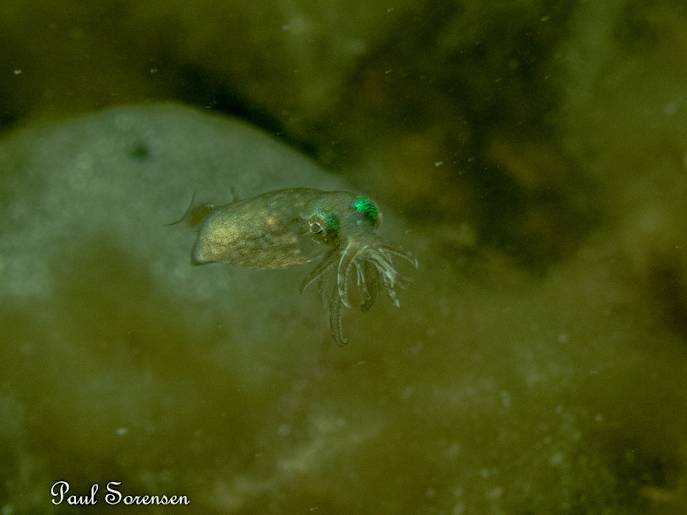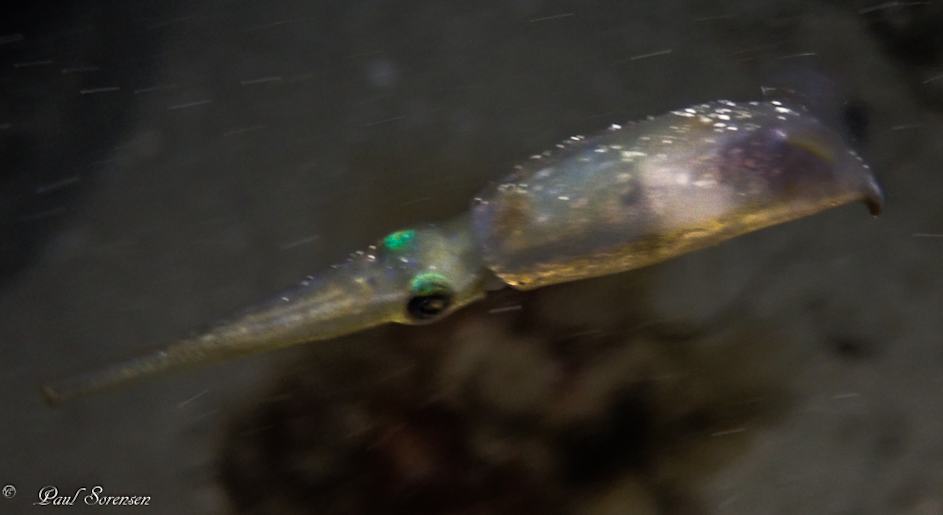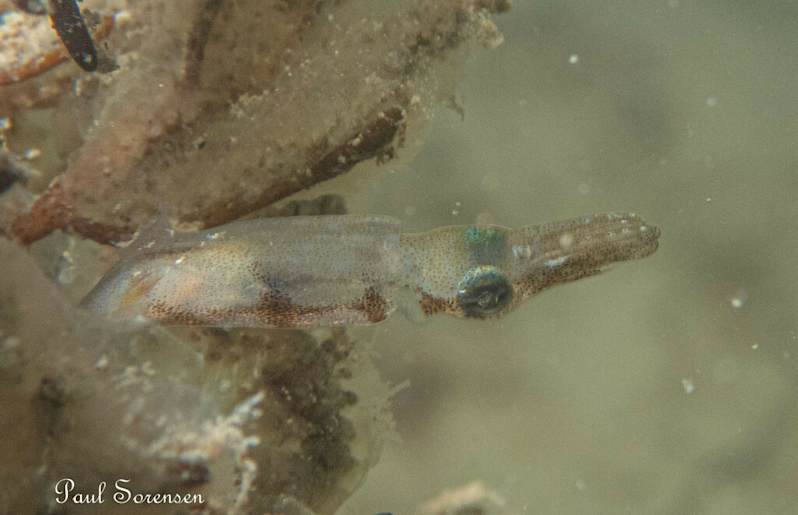
The southern pygmy squid is one of the smallest species of squid in the world! Photo: Paul Sorensen

This species only lives for about 150 days and in that time needs to mate to ensure that the species population stays abundant. Photo: Paul Sorensen

Southern pygmy squid only grow to a max mantle length of 2.5 centimetres for females and around one centimetre for males. The mantle is the body of the squid. Photo: Paul Sorensen
Welcome to the Marine Mili series, a regular column about all things marine! During this series I aim to inspire people to want to protect our oceans and all the marine life that call our oceans home. Hopefully after reading each column, you would have learnt something new including what we can do to help protect and preserve our oceans. You can follow me and my journey on my Instagram page: _marine_mili.
Did you know that the southern pygmy squid is one of the smallest species of squid in the world, and they call Victoria home.
Not only are they one of the smallest species of squid but they are the smallest of any cephalopods which include cuttlefish, octopus, and other species of squid.
This tiny species of squid can be found in shallow inshore waters and commonly seen in seagrass beds off the southern and eastern coast of Australia.
This species only grows to a maximum mantle length of 2.5 centimetres for females and around one centimetre for males. The mantle is the body of the squid.
Southern pygmy squid have a special ability to colour change and blend in with their surroundings.
This camouflaging ability helps with their survival as they are so small and an easy target for many creatures in the sea.
Despite their small size, these little squid are ambush predators and commonly found in seagrass beds, so the grass provides a place for them to be safe from some of their many predators.
The fascinating southern pygmy squid will use their special glue glands to attach themselves to the underside of seagrass leaves.
These glands are found on the upper part of the squid’s body and once the glue is produced, they can easily attach themselves to leaves.
Not only do they get protection from predators and camouflage, but they also can hunt like this.
The southern pygmy squid feeds on crustaceans including small crabs and shrimp.
As previously mentioned, they are ambush predators which means any small crustaceans who visit the patch of seagrass to be safe from predators may instead find a hungry southern pygmy squid there ready to bounce.
This species only lives for about 150 days and in that time needs to mate to ensure the species population stays abundant.





